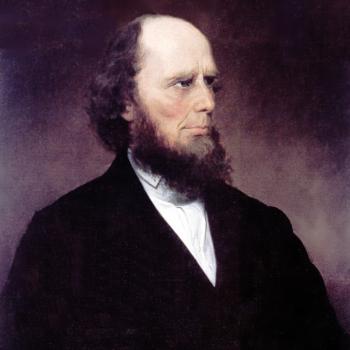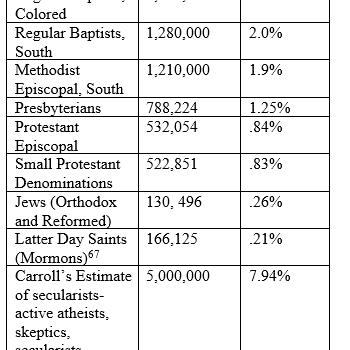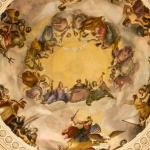“…What is man that you are mindful of him and the son of man that you care for him..”
David, King of Israel, Psalm 8:5

Voyager and the Pale Blue Dot
In early 1990, the satellite Voyager was screaming through the solar system at 36,000 mph[1] on its way to becoming the first man-made object to leave the solar system. On Valentine’s Day, Voyager’s commanders decided to direct the satellite to make one last turn toward Earth and take a picture.[2] With the sun 3.6 billion miles in the distance, Voyager captured an enduring image of Earth nicknamed the pale blue dot.[3]
Scientist Carl Sagan writes,
Look again at that dot. That’s here. That’s Home. That’s us. On it, everyone you love, everyone you know, everyone you have ever heard of, every human being who ever lived, lived out their lives… Every young couple in love, every mother and father, hopeful child, inventor and explorer, every teacher of morals… every saint and sinner in the history of our species lived there—on a mote of dust suspended in a sunbeam.[4]
Voyager 1’s Pale Blue Dot | NASA Solar System Exploration
The Wonder of The Heavens
Without the power of satellites or telescopes, without Hubble, or Webb, or Hale, the ancients would stare into the vast dark sphere of the night above them and wonder. Some of them would see the stars as gods guiding their lives. Others would see movements in the night sky as divine forecasts: some ominous, some fortunate. Kings and philosophers, shepherds and Magi shared deep wonder at the heavens.
It would be good to retain some of the ancients’ awestruck wonder at the sky above. The universe is unimaginably vast and breathtaking in power. If you can find a dark enough night, one with little light pollution, you may be able to get a glimpse of the Milky Way. If so, wondering about its beauty is the only sensible response. The Milky Way, like the rest of the universe, is, simply put, amazing.
God and the Universe
What does this vast, beautiful, powerful universe reveal about the One who created it? The answer lies, partially, in the word “created.” The universe is not eternal. It was brought into existence by God. Before that time, if it is appropriate to use the word “time” to discuss things outside the sphere of space and time, there was no material universe. There was no matter, space. There was only God. God, then, is beyond this universe. His eternal home is not within its confines. Because God is beyond the universe and the structures of it, God can be present everywhere within it at once. The Creator is infinite in His being, power, and wisdom. The universe declares God’s glory by being itself. As if it were a trillion-voice choir, the universe sings its unceasing anthem to the majesty and glory of God.
In the universe, God’s wisdom is declared. Think of it this way, who was it that spun the galaxies together and formulated the laws of gravity? Who was it that created the enduring mystery of light? Who was it that designed the electron cloud around the nucleus of the atom? Who was it created the supermassive fusion reactors we call “stars?” It was God. It was the God who revealed himself in the cryptic name YHWH, meaning I am that I am or the One who is, who caused the great choir of the universe to begin singing. The Designer, the Conductor of the universe has wisdom far beyond the capacity of trillions of synapses constituting our brains.
God and Beauty
Beyond the staggering intellect behind the cosmic design of the universe, the universe is strikingly beautiful. In fact, “beauty” is not a strong enough word to describe the splendor of the heavens. Just in our small corner of the universe, beauty beckons. There is the savage blue beauty of Uranus and Neptune where liquified diamonds rain from the atmosphere. There is the stark red wasteland of Mars cratered by asteroids for millennia. Venus, our closest neighbor, is practically an inferno with temperatures hot enough to melt lead, an atmosphere full of sulfuric acid, and atmospheric pressure 90 times higher than what is found on earth.[5] Even in this little solar system, color and wonder abound. It is beautiful. Because of God’s nature, all things beautiful are derived from Him. As an ancient philosopher might say, God is not just beautiful, God is beauty itself. Whatever beauty is, is a derivative from God. The beauty of the universe declares the glory of God.
God and Humanity
With a universe so vast to govern, with billions of galaxies, trillions of stars, and numberless planets to coordinate, why in heaven’s name would God concern Himself with our pale blue dot? Even if God wanted to care about a small blue dot orbiting a middling star in the Milky Way, why would God care about the humans who inhabit it? The inhabitants of this little blue dot can be a raucous bunch, after all.
However strange it may sound to our ears, God loves this little blue dot and the humans who inhabit it. The Creation narrative in Genesis eloquently states humanity is the crowning jewel of God’s creation. Humans were designed to live in a relationship with Him. He cares deeply about us, our lives. In every moment of our existence, God is present. God is interested in every bit of our lives, both the good and the bad. One way God reveals His concern about us is in the names God uses for Himself. In the Scriptures, God regularly describes Himself as, “The God of Abraham, Isaac, and Jacob.” By using this name, God is describing Himself in covenant terms. The name reminds us God is the God who makes covenants with people. He makes promises. He keeps them.
God is light. No darkness can withstand the light. No shadow can withstand dawn. No darkness can overwhelm God in His infinite goodness. When darkness has overtaken us, when events scar our souls, we are not alone. The Maker of heaven and earth is with us and for us. God is committed to help us. If you are walking in the darkness, look up. Let the glory of the universe remind you of just who is on your side.
[1] “Facts about Voyager 1—the Only Probe to Reach Interstellar Space—as NASA Marks Its 40th Anniversary,” Newsweek, September 4, 2017, https://www.newsweek.com/nasa-voyager-1-40th-anniversary-facts-659149.
[2] “Voyager 1’s Pale Blue Dot | NASA Solar System Exploration,” accessed April 2, 2022, https://solarsystem.nasa.gov/resources/536/voyager-1s-pale-blue-dot/.[3] “Voyager 1’s Pale Blue Dot | NASA Solar System Exploration.”
[4] Carl Sagan and Ann Druyan, Pale Blue Dot: A Vision of the Human Future in Space, Reprint edition (Ballantine Books, 2011).[5] “Venus,” NASA Solar System Exploration, accessed April 2, 2022, https://solarsystem.nasa.gov/planets/venus/overview.















